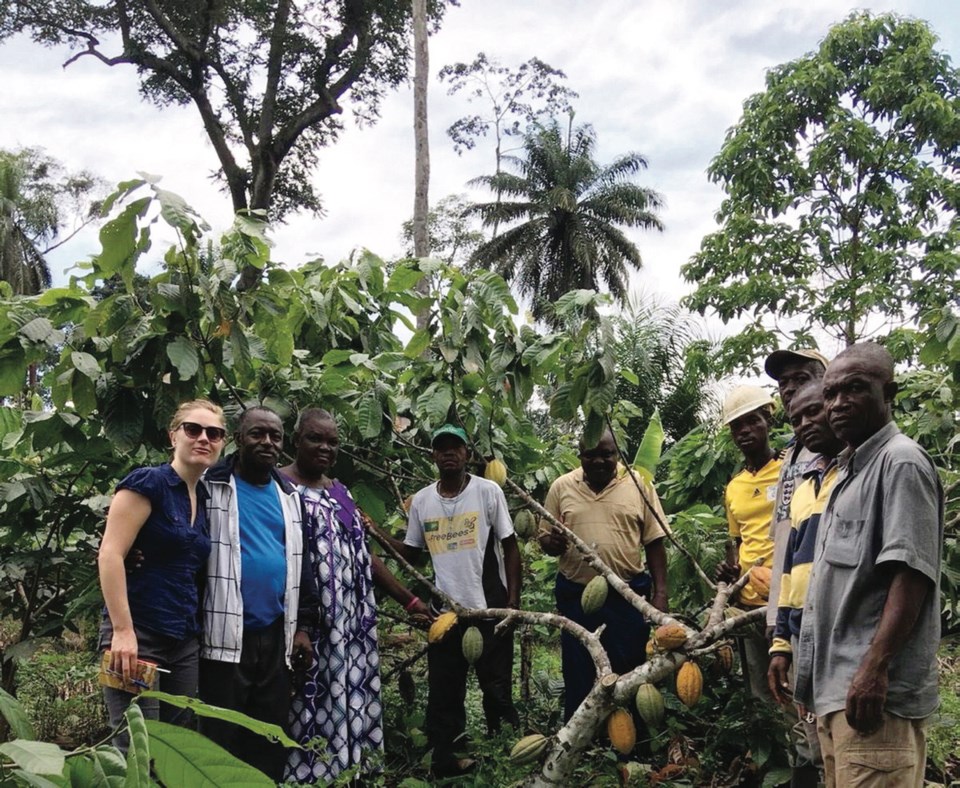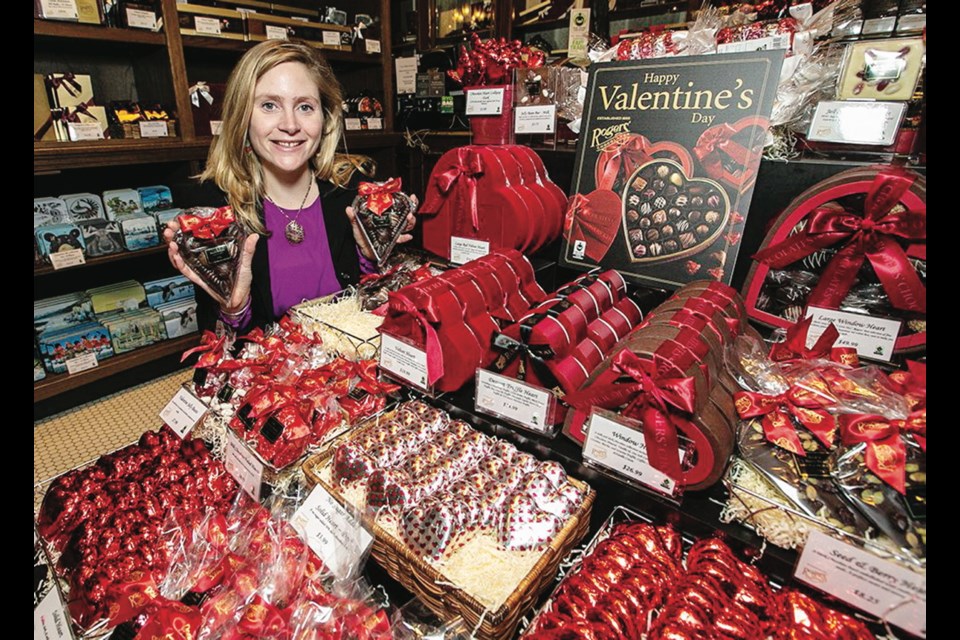With Valentine’s Day approaching, a UVic geographer is hoping people giving chocolates to their sweethearts will spare a little love for the farmers who grow the cocoa that goes into chocolate.
“Cocoa is produced by millions of small holders, many of them on the verge of poverty,” says Sophia Carodenuto, assistant professor of geography at the University of Victoria.
“It’s time to bring some recognition to consumers about just where cocoa is coming from and the kinds of practices used in the production of cocoa and chocolate.”
Since 2012, Carodenuto has been talking with those in the chocolate industry, government, farmers and manufacturers to examine the role of cocoa farming in forest deforestation and how it affects ongoing poverty.
On Jan. 29, Carodenuto published a scholarly paper on the subject: Governance of zero deforestation cocoa in West Africa: New forms of public-private interaction.
Her paper is an examination of a move by chocolate companies to support sustainable and equitable cocoa farming and chocolate production. It also examines how governments in cocoa-producing countries are committing themselves to forest preservation and better social conditions for farmers and others in the chocolate industry.

Cocoa is the most important ingredient in chocolate, the source of its unique flavour. It’s derived from beans of the tropical Theobroma cacao tree. Originally from Mexico, the tree is now grown in tropical forests in Central America, Indonesia and West Africa, where 68 per cent of the world’s cocoa is now grown.
Cocoa farms are typically small operations, usually one family. With so many disconnected small farms, growers have little bargaining power in setting the price of cocoa beans, so the only way they can earn more money is by increasing their yield.
Carodenuto said the temptation is strong for farmers to switch to growing cocoa in full sun by slashing the forests and then planting. Yields improve initially, but the soil is quickly denuded and then more forests must be cut and more cocoa trees planted.
Her paper estimates 2.3 million hectares of tropical forest were lost in West Africa to cocoa farming between 1988 to 2007.
Traditionally, cocoa trees are grown within a forest under the shade canopy of other trees. When it’s done properly, the disturbance to the surrounding forest and its biodiversity is marginal.
Cocoa beans grow inside pods. Farmers collect the pods and extract the beans, which are then allowed to ferment for up to a week. The beans are then dried, usually in the sun, packed in sacks or boxes and sold to the market.
The entire process is labour-intensive and often conducted on land where ownership or tenure is poorly established or enforced. As a result, nobody can be sure how many cocoa farms exist or how many farmers and families they support.
“Right now, we can only estimate that two million cocoa farmers live in West Africa,” said Carodenuto. “But nobody really knows exactly how many and nobody can say where those farms are actually located.”
Beyond the small farmer, the beans go through middle operators, who sell them to commodity brokers and grinders and processors.
Ground cocoa beans are then sold to traders, who send the ground product to further processors in places such as Holland, Belgium, Germany or Switzerland.
These manufacturers transform the ground beans into cocoa powder or chocolate liquor for sale to chocolate companies. Even then, the chocolate companies usually only make a bulk chocolate product for sale to confection makers.
“It’s interesting that most of the manufacturing steps are not occurring in the countries where the cocoa is produced,” Carodenuto said. “The cocoa is exported mostly raw.
“It would be a huge boost to the economies of places like Ghana or Cameroon if they could add more value to the cocoa bean inside their own countries.”
Carodenuto said the complexity of the supply chain makes it easy to lose sight of the small farmers growing cocoa in a tropical forest.
“You really have to dig deep,” she said. “Last week, someone was selling specialty cocoa in the supermarket and I asked where it came from and was told: ‘Oh, it comes from Switzerland.’ ”
“I thought: ‘OK, but where is the cocoa from? It can’t be Switzerland.’ ”
Carodenuto said she likes to think that, despite the complexities in the supply chain and the difficulties keeping track of so many small growers, there will come a time when chocolate will be sold with labels indicating Fair Trade or Zero Deforestation.
“I would encourage people to start looking out for Fair Trade labels or putting pressure on their favourite chocolate brands to provide some transparency about the origins of their cocoa products,” she said.
“Hopefully, going forward, we will start to see some supply-chain sustainability.”



